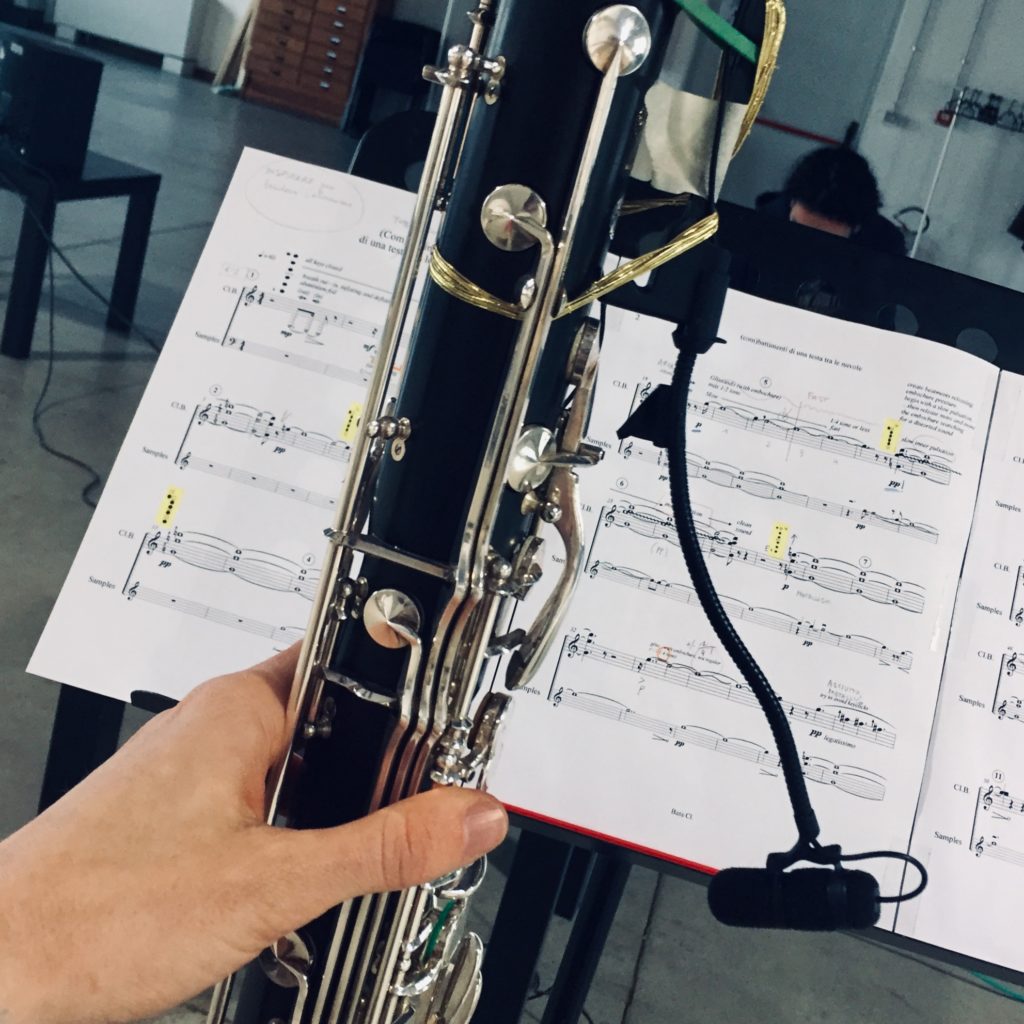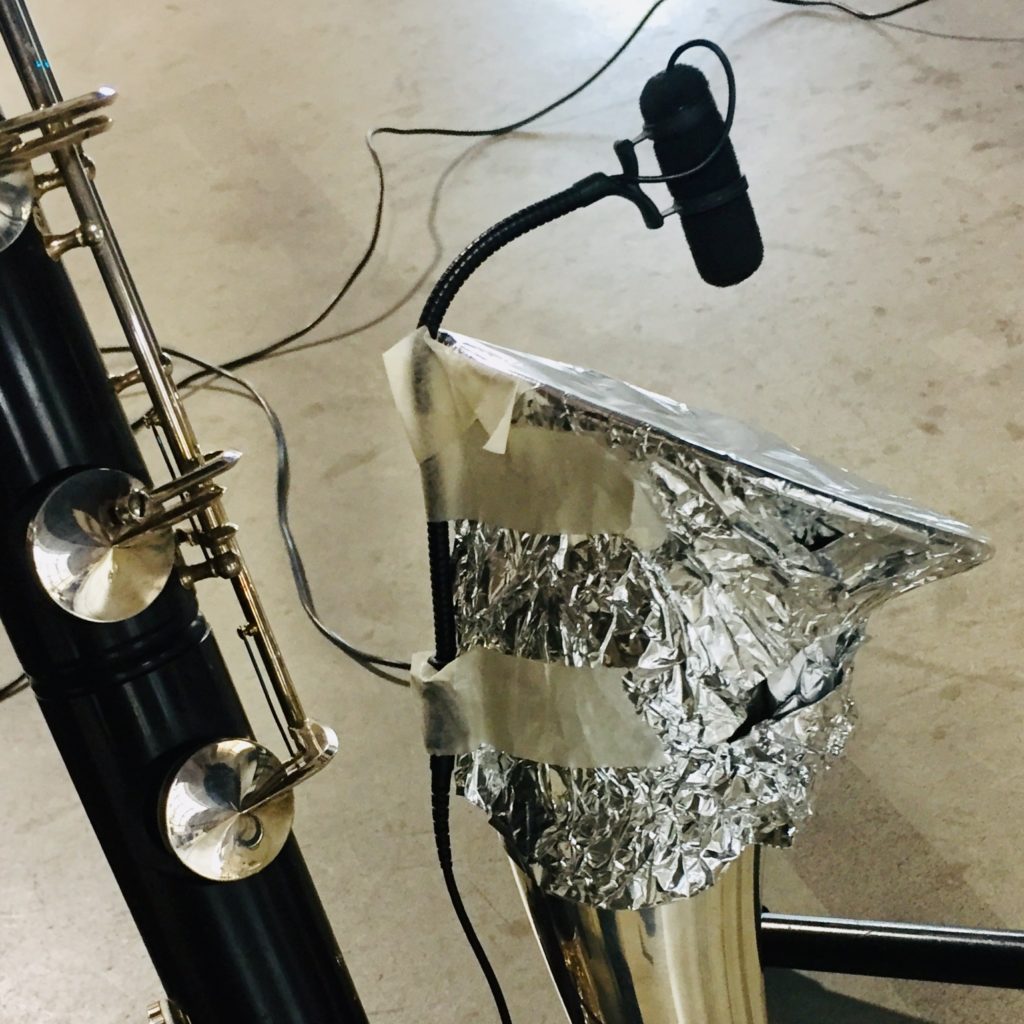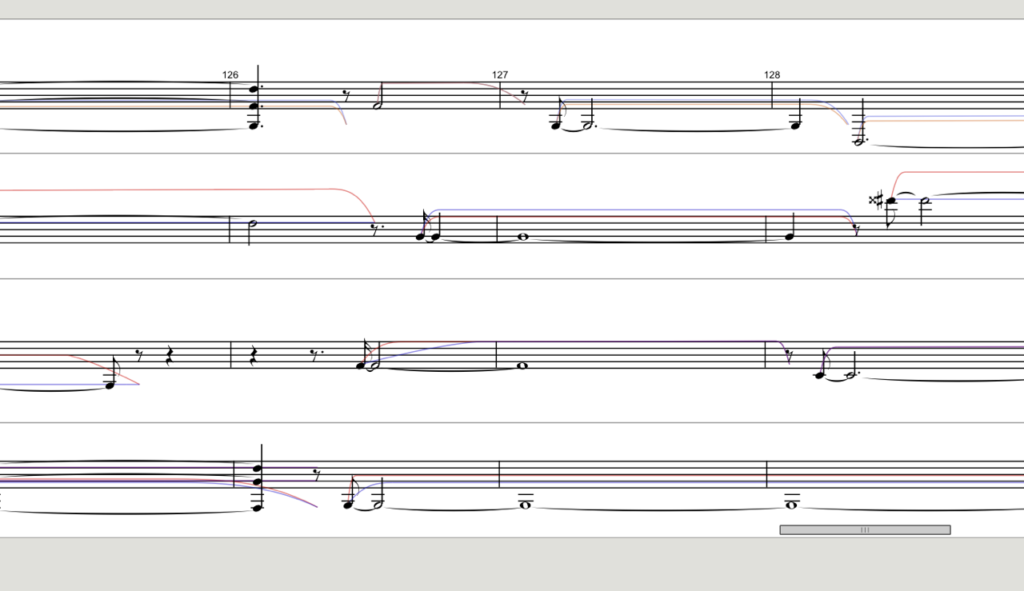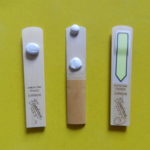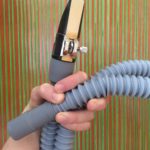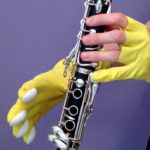Luca Valli – “Totem” (2019)
for amplified Prepared Bass Clarinet
Our work together, as explained by Luca himself.
“Totem was born thanks to the collaboration with Chiara, originating from our research on instrumental preparation with aluminium foil.
In particular, I was interested in the exploration of the apparent dichotomy between aluminium sound and clarinet sound (see the paragraph “Blending aluminium with clarinet sound”) and in its reconcilement.
I chose as a starting point a multiphonic with very stable partials which isn’t influenced by this specific preparation. The rest of the musical materials descended from it through progressive modifications, working on slightly different fingering configurations, embouchure flexibility, articulation and the use of voice.
The whole piece is then built around this first multiphonic: from here comes the title Totem, to be interpreted as a fixed point around which events happen and that, at the same time, is influenced and progressively modified by what surrounds it. Throughout the piece, this progressive modifications lead us from the stable sounds of the beginning to the distorted aluminium rattles of the last section. We explore the gap between these two opposites, trying to bridge it, progressively distorting the first material and embedding the second one.
This “sonic movement” happens in two different ways: on the one hand, as just mentioned, through the acoustic development of the materials; on the other, it happens through a specific setup and work on amplification. Both for sample recording and for live performances we used two super-cardioid microphones (DPA-4099), that thanks to their excellent isolation of the sound source provide an extremely clean result.
Both microphones are fixed directly to the clarinet body: the first one is tied to the upper part of the instrument, pointing towards the left hand; the second one is fixed to the bell, pointing towards the centre of the aluminium foil.
Fastening the mics directly to the instrument allows us to control the amplification levels with automation – using Max/MSP – and guarantees a level of precision and balance otherwise impossible. For this purpose I used the Bach library developed by Andrea Agostini e Daniele Ghisi, that made managing technical issues and working on the creative process at the same time much easier.
https://www.bachproject.net/
The tape part is exclusively made out of prepared instrument samples, using the same mic setup and without any kind of signal processing (indeed, there is a “beta version” of the piece for 4 amplified prepared Bass Clarinets – each with 2 mics controlled by live electronics – and without tape).
A fragment from the automation score, showing a synthetic version of the four clarinet parts and the automation lines for the mic levels.
The aim of this setup – with double mic and automation – is not only to bring the listener very close to the sound source but, above all, to lead his ear along the body of the instrument, driving him into an otherwise inaccessible journey.
In the following samples, we can hear how the instrumental timbre changes as we capture the sound with one microphone or the other.
Another passage in 3 different takes:
This is the original take (1 mic for each channel and same gain for both mics) of a pitch played as a harmonic of two different fundamentals. Changing fingering, the sound literally moves from the upper part of the instrument (top panel – Left channel) to the bell (lower panel – Right channel), additionally triggering the aluminium rattle.

Another example, with the same sound movement in a more complex excerpt.

These examples show not only how much the sound quality changes depending on the position of the microphone but, above all, how sound source moves across the instrument body.
For now, we decided to flatten this movement, presenting a mono-spatial version of the piece. Nevertheless, we are working on a new audio version of the piece, with the aim to valorize the instrument inner spatial dynamism.”
